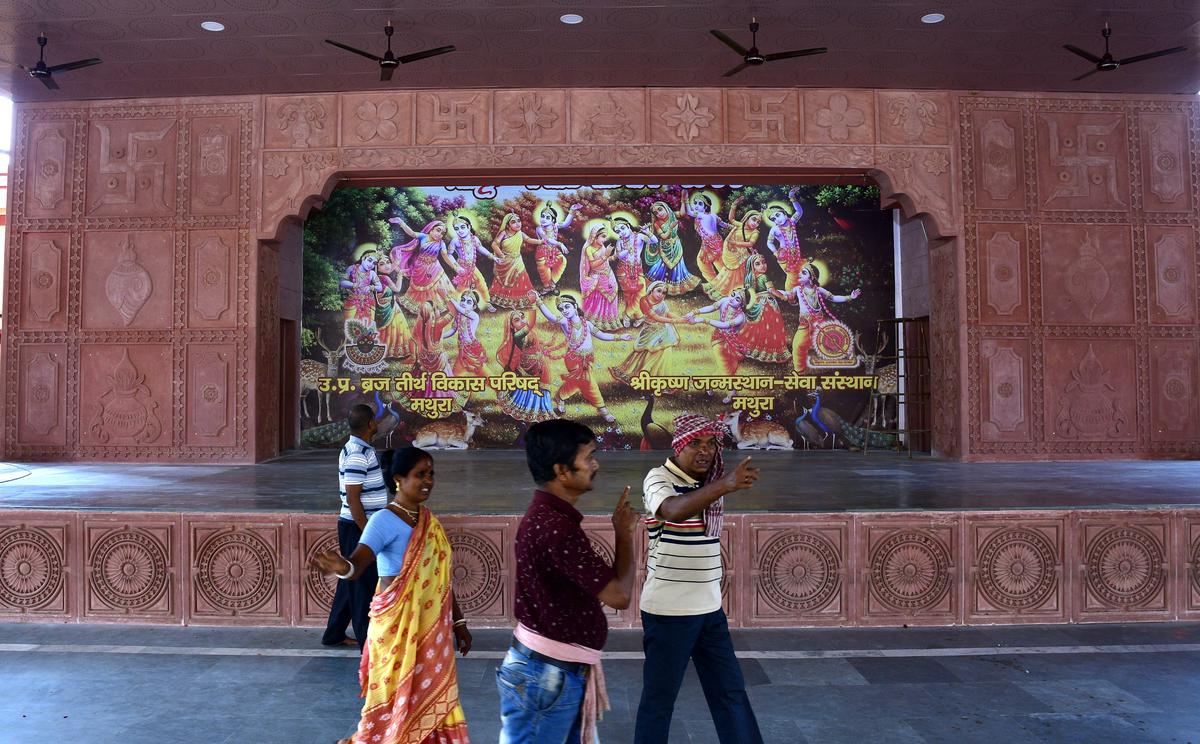
Mathura-Vrindavan aims to become a carbon neutral tourist destination by 2041
The Hindu
Annual tourist footfall to Mathura-Vrindavan expected to grow to 6 crore by 2041; draft redevelopment plan calls for ban on tourist vehicles, switch to electric vehicles for public transport
Mathura-Vrindavan, one of India’s largest pilgrimage centres, aims to become a “net zero carbon emission” tourist destination by 2041, Uttar Pradesh government officials have told The Hindu.
This means that tourist vehicles will be banned from the entire Braj region, which includes famous pilgrim centres such as Vrindavan and Krishna Janmabhoomi. Instead, only electric vehicles used as public transport will be allowed into the area. All 252 water bodies and 24 forests in the area will also be revived, officials privy to the UP government’s draft redevelopment plan said.
According to the plan, the Braj region’s annual pilgrim-tourist footfall is expected to multiply from the current level of 2.3 crore to six crore by 2041. “Keeping this in mind, there is a need for eco-friendly development of the area which while aiding the local economy does not have an adverse effect on the environment,” said a top official of the Braj Teerth Vikas Parishad, the nodal agency for implementing the plan. While the draft masterplan was submitted in March, the strategy document will be submitted this month following which the plan will be released for public consultation.
To attain a net zero carbon emission status, greenhouse gas emissions must be reduced to as close to zero as possible, with any remaining emissions re-absorbed from the atmosphere, by oceans and forests for instance.
To facilitate this in Mathura-Vrindavan, the plan divides the entire region into four clusters, each containing two of the eight key cities. “The idea is to form small circuits called ‘Parikrama Paths’ which the pilgrim can undertake either on foot or using electric vehicles. In case they want to travel from one destination to another they can avail electric mini-buses,” Shubham Meena of Design Associates, the company which has drafted the plan, told The Hindu. This will be the first such carbon neutral master plan for a tourist destination in India, he claimed.
Tourists would park their vehicles outside the cities and use only electric vehicles such as e-rickshaws and mini-buses to travel within these small circuits. The plan envisages three to five charging points for electric vehicles in Mathura and Vrindavan and two each in other key towns. Each Parikrama Path will include water kiosks, centres distributing prasad, dining halls and resting spaces for tourists.
Some of the Paths being planned are in Govardhan, Gokul, Barsana and Vrindavan, all places deeply associated with Krishna devotion. “The infrastructure of these areas has been planned together so that they can use a common pool of infrastructure,” Mr Meena said.













